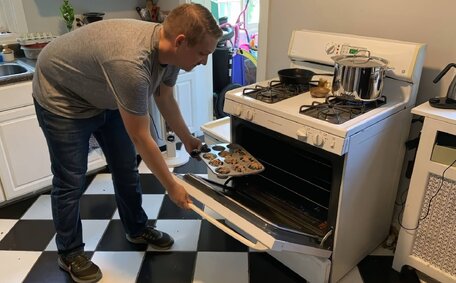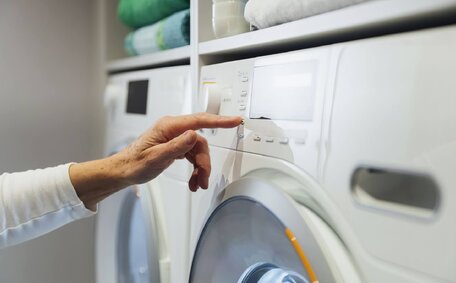What is a water booster pump system?
A pressure booster pump system is engineered to increase your water pressure in homes and buildings where you may really need a water booster pump due to low municipal or well water pressure. In such cases, these systems are vital for applications where booster pump need arises, compensating for inadequate pressure water from the water source, ensuring robust and consistent pressure all the way into your plumbing fixtures and outlets.
You might wonder, 'do I need a booster pump?' when your water pressure falls below the 30 psi mark. Common scenarios where you might wonder, 'do I require a booster system’ include:
- Multi-story buildings where pressure falls short, particularly when water pressure diminishes on upper floors
- Homes at the end of the local water supply line
- Well water systems with low output pressure
- Homes with frequent pressure fluctuations
While capable of operating continuously at high water pressures, a booster pump can be very efficient and typically runs at 20% capacity or less to meet normal household pressure and flow rate needs.
When would you need a water booster pump?
There are several common scenarios where these devices, namely water booster pumps, are indicated as a need:
- Multi-story homes or buildings where pressure all floors are not equally maintained, with insufficiency felt on upper levels, often under 30 psi
- Homes at the end of the city water supply line that experience low pressure due to distance
- Rural properties relying on private well water with inadequate pressure
- Fluctuating water pressure throughout the home over the course of the day
- Experiencing a low flow rate from fixtures like showers and taps
Understanding a water booster pump how it works is key, as achieving a high water pressure that is optimal for most homes typically ranges from 30-80 psi, and recognising when you need water booster assistance is crucial. Pressures below 30 psi will result in weak flow rates and in instances where I need booster assistance, Water pressure too high, specifically over 80 psi, can damage your pipes over time. If your home fits any of the above scenarios and you need a home booster pump for water flow improvements, it is recommended to restore normal pressure.
Signs you might need a booster pump
There are several clear signs that indicate your home or business could benefit from installing a water booster pump system:
- Weak water pressure - Low flow from showerheads, taps, and other fixtures
- Slow-filling toilets, washing machines, dishwashers, and bathtubs
- Insufficient pressure or volume for irrigation systems
- Frequent pressure fluctuations throughout the day
Homeowners and business owners in Erskine Park, Sydney and surrounding regions should assess their properties for these common indicators suggesting when to install a booster pump. Both residential and commercial buildings can experience issues needing to increase flow and pressure across all floors over time as infrastructure ages or demand increases.
Carefully evaluating your pressure needed and water levels and flow rate can indicate if you need pressure boosting to maintain a steady water flow for your usage needs. Pressure readings, important for assessing pressure requirement, should be taken during peak usage times when demand is highest. Consult with a professional plumber if various fixtures exhibit pressure lower than 30 psi and you’re pondering whether to check your system for your booster pump installation.
Types of water booster pumps
There are three main types where booster pumps come in variety:
- Single-stage centrifugal pumps - These singlestage booster pumps convert volume into pressure, utilising a rotating impeller to move water through the system. They can provide a pressure boost up to 235 feet of head.
- Multi-stage centrifugal pumps - Multi-stage pumps use a series of impellers to generate higher water pressures, effectively designed to increase water pressure and flow, achieving heads up to 660 feet.
- Variable speed pumps - These pumps, unlike constant speed models, adjust motor speed, creating pumps water pressure in water systems, to save up to 30% in energy costs. Their water pressure can be precisely calibrated to meet the unique requirements of your establishment.
VFD speed control demonstrates how modern pumps come with the ability to remarkably enhance efficiency. By optimising pressure output, booster pumps maintain a water pressure flow that can be forceful, yet harmless to pipes, preventing blockages more than ever before. Speed drive systems also reduce pump cycling and are whisper-quiet.
For homes with more complex needs or fluctuating demand, understanding a booster pump how does it function is vital, and professional advice is recommended to select the right system.
Key components of a booster pump system
The key components of a water booster pump system include:
- Pump - The booster itself, acting as a pressure pump, accomplishes the task to increase pressure, utilising motors and impellers to enhance the water pressure.
- Pressure tank - A pressure tank maintains fluid pressure within the water ensuring there’s always enough water on hand and moderates pump cycling.
- Pressure switch - monitors system pressure, signalling the pump when to engage for optimal performance across all water fixtures.
- Check valve - Prevents backflow of water into the supply line.
- Pressure gauge - Measures real-time system water pressure.
- Piping - Connects all system components and fixtures.
comprehending the function of each element and the role of the booster pump—the central unit—in the overall system is vital for flawless installation, maintenance, and troubleshooting of booster pumpthe systems.
Consulting qualified plumbers about how to install booster pump systems impacts your system and selecting suitable sizes, pre-charged tanks, precise pressure switches, and piping based on your property’s needs is highly recommended.
How to install a water booster pump
To install a heavy-duty pump like a water pressure booster system requires careful planning, particularly when pressure adjustments are significant, and should generally be performed by a licenced plumber, especially for commercial properties or complex systems. However, a skilled DIYer who knows how a booster pump can assist might manage the installation of water booster pumps in their residence by following these key steps:
- Select a suitable area, such as a basement or garage, ensuring space for the pump, pressure storage tank, and access to energy sources, supply lines, and where water your outlets will be used.
- Verify that the water supply valve and associated pipework are capable supplying the additional pressure necessitated by the water booster system, considering the volume required for all your activities.
- Select a compatible pump and adequately sized water storage tanks, assessing how much water is needed at peak demand.
- Install water pump, tank, check valve, pressure switch, pressure gauge, and other system components.
- Link the water supply pipe to the pump inlet, aligning timing with the pump’s engagement to ensure water enters, and then to the outlet pipe where outlet pressure reaches the tank and building’s main line.
- Ensure electrical wires are correctly and safely connected to the pump and control switches.
- Ensure to conduct tests on the pump to achieve the right pressure for your home’s system and keep an eye out for anomalies.
- Make sure you can take necessary safety precautions against leaks, electricity hazards, or backflow.
Booster pump installation in complex water systems, where pumps can navigate intricate pipework, can be highly technical. It’s always best to Seek guidance from professionals like licenced Sydney plumbers Erskine Park Plumbing if you require precise sizing calculations or have enquiries about merging the pump with your plumbing system.
Operating principles of booster pumps
Through booster pumping, the increased velocity from pumps increase water pressure throughout the system. The faster spinning impeller speed water pressurisation is proportionate to the pump curve rating.
A motor turns an impeller inside the pump housing, using centrifugal force to impart kinetic energy, effectively moving water through your water pipes. This process boosts the supply system by propelling water competently, surmounting the pull of gravity or friction losses in the pipes.
Key factors determining a booster pump’s operation include:
- Flow rate - The amount water supplied per minute, measured in gallons per minute (gpm) or litres per minute (L/min).
- Pressure head - The maximum pressure a pump can deliver, measured in feet or metres.
- Horsepower - The mechanical energy added by the motor that drives the impeller. More power generates higher pressure to attain the desired level.
- Pump curve chart - A graph indicating optimal flow rates, head pressure, horsepower usage and efficiency.
Proper pumping system sizing requires matching these specifications to the household water pressure requirements and fixtures. A pump does assist without causing damage, but one with excessive pressure can damage pipes. Variable speed drives optimise flow pressure, providing the best efficiency by using only necessary power.
Understanding these core operating principles can help determine when a booster pump is necessary, particularly in situations where water pressure is inconsistent, ensuring your needs are met throughout the plumbing infrastructure.
Advantages of variable speed booster pumps
Variable speed booster pumps offer several key advantages over standard single and multi-stage pumps:
- Energy efficiency - With the question 'does booster pump save energy?' answered, variable speed drives can indeed reduce energy consumption by up to 70% compared to fixed speed pumps.
- Extended motor life - The drives prevent pump cycling and limit unnecessary water velocity. This reduces wear and tear and prolongs pump lifespan.
- Quiet operation - Eliminating pressure fluctuations creates a smooth, consistent flow. The speed drive VSD pumps operate in a whisper-quiet manner.
- Advanced monitoring - Modern variable speed pumps feature smart controls, wireless connectivity and detailed analytic reporting on usage.
- Easy installation - Compact integrated drives allow drop-in replacement of older pumps without reconfiguring pipes or circuits.
With technologies like VFD and PLC optimising pressure delivery, variable speed booster pumps maximise reliability and efficiency. Their intelligent capabilities and energy savings make them the optimal choice for modern plumbing systems.
Do you need a water booster pump?
Determining if you need a water booster pump requires assessing factors such as:
- The water pressure in your home or your building
- The size and layout of your property, along with how the water required fits your daily routines
- Your overall water usage requirements
In general, if you experience frequent low water pressure under 30 psi, insufficient flow rates from taps and showers, or inadequate pressure for operating appliances and irrigation systems, a water booster pump can be a necessity.
Homes with multiple floors often require boosting water systems as pressure diminishes on upper levels. End-of-line residences or rural properties relying on wells can also benefit from boosting water pressure.
Contact a professional Sydney plumber like Erskine Park Plumbing to evaluate your existing water system pressure and flow rate during high demand periods. This is the most effective approach to ascertain whether a correctly sized booster pump, harmonised with your home, is necessary to enhance water distribution systems and re-establish adequate pressure.






